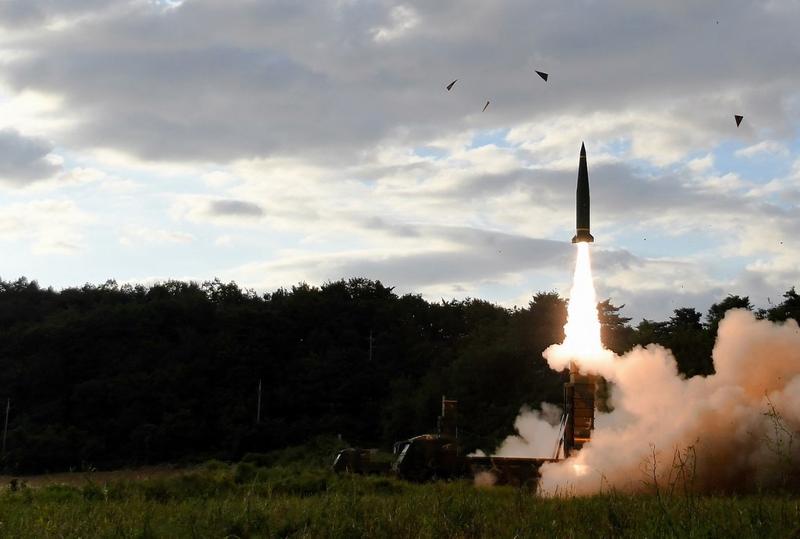 This handout photo taken on Sept 15, 2017 and provided by South Korean Defense Ministry in Seoul shows South Korea's missile system firing Hyunmu-2 missile into the East Sea from an undisclosed location on South Korea's east coast during a live-fire exercise. (STR / SOUTH KOREAN DEFENSE MINISTRY / AFP)
This handout photo taken on Sept 15, 2017 and provided by South Korean Defense Ministry in Seoul shows South Korea's missile system firing Hyunmu-2 missile into the East Sea from an undisclosed location on South Korea's east coast during a live-fire exercise. (STR / SOUTH KOREAN DEFENSE MINISTRY / AFP)
SEOUL - South Korea is in the final stages of developing a ballistic missile that can carry a warhead of up to 3 tons, Yonhap news agency reported on Thursday.
In its defense blueprint for 2022-2026, the defense ministry said it would develop new missiles "with significantly enhanced destructive power," upgrade missile defense systems and deploy new interceptors against long-range artillery.
Among those missiles is a new weapon with a flight range of 350-400 km and a payload of up to 3 tons, designed to destroy underground facilities, Yonhap reported, citing unnamed sources
"We will develop stronger, longer-range and more precise missiles so as to exercise deterrence and achieve security and peace," the ministry said in a statement.
Among those missiles is a new weapon with a flight range of 350-400 km and a payload of up to 3 tons, designed to destroy underground facilities, Yonhap reported, citing unnamed sources.
ALSO READ: S. Korea 'to hold military drill near disputed islets with Japan'
The missile would be the latest in a missile race that is set to accelerate after South Korea and the United States agreed to scrap all bilateral restrictions on Seoul's missile development earlier this year.
In 2020, South Korea announced its new Hyunmoo-4 short-range ballistic missile (SRBM) could carry a 2-ton warhead. The Hyunmoo-4 is South Korea's largest missile.
Before the decade is out, Asia will be bristling with conventional missiles that fly farther and faster, hit harder, and are more sophisticated than ever before - a stark and dangerous change from recent years, analysts, diplomats, and military officials have said.
READ MORE: South Korea unveils prototype of KF-X fighter jet
Overall South Korea's defense blueprint calls for spending 315.2 trillion won (US$273 billion), a 5.8 percent year-on-year increase on average, over the next five years.



